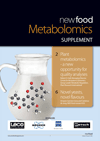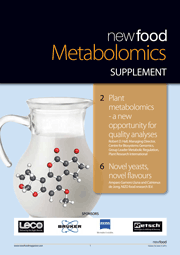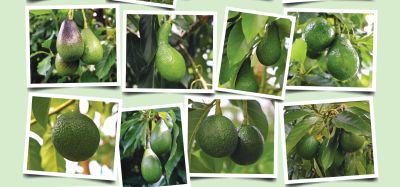Metabolomics supplement 2013
Posted: 24 June 2013 | Robert D. Hall, Amparo Gamero Lluna, Catrienus de Jong | No comments yet
Plant metabolomics – a new opportunity for quality analyses (Robert D. Hall, Managing Director, Centre for Biosystems Genomics, Group Leader Metabolic Regulation, Plant Research International)
Novel yeasts, novel flavours (Amparo Gamero Lluna and Catrienus de Jong NIZO food research B.V.)




- Plant metabolomics – a new opportunity for quality analyses
Robert D. Hall, Managing Director, Centre for Biosystems Genomics, Group Leader Metabolic Regulation, Plant Research International
Metabolomics is the science dedicated to the analysis of small molecules. Such small molecules determine most key features of (crop) plants and their products. These include nutritional value, taste, fragrance, colour, disease resistance, appearance, spoilage, off-flavours and many more. The compounds involved cover not only the most important nutritional food ingredients such as sugars, amino acids, fatty acids etc., but also components like polyphenols, terpenoids and tocopherols which determine food quality and influence consumer perception and preference. Consequently, knowledge of these small molecules is hugely important in helping us design and monitor food production and food processing strategies… - Novel yeasts, novel flavours
Amparo Gamero Lluna and Catrienus de Jong, NIZO food research B.V.
Flavour is one of the most important attributes of food quality and a lot of research in the food industry is focused on improving and diversifying the flavour of products. Flavour compounds of biological origin, the so-called natural or bio-flavours, are attracting more and more interest as a natural, clean-label solution. Plants are an important source of new flavours and essential oils; however, this option has its limitations. It can be difficult to extract these compounds and be expensive (they may be present in low amounts, in bound form) or only found in exotic wild plants. Another potential source is flavour synthesis or conversion of precursor-compounds by microorganisms. When this occurs in the product during fermentations, it is a highly attractive way to produce novel flavours…









